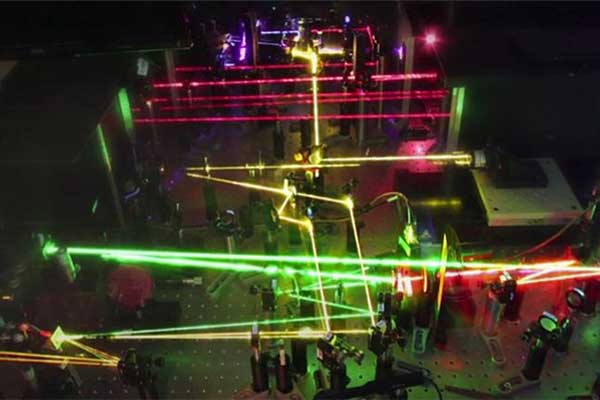- The researchers identified a loss pathway in organic solar cells which makes them less efficient than silicon-based cells at converting sunlight into electricity.
- They also identified a way to suppress this pathway.
- They propose manipulating molecules inside the solar cell to prevent the loss of electrical current through an undesirable state, known as a triplet exciton.
Researchers have identified a key mechanism responsible for the lower efficiencies of organic solar cells and shown a way that this hurdle might be overcome.
The international group of researchers, led by the University of Cambridge, identified a loss pathway in organic solar cells which makes them less efficient than silicon-based cells at converting sunlight into electricity. In addition, they identified a way to supress this pathway by manipulating molecules inside the solar cell to prevent the loss of electrical current through an undesirable state, known as a triplet exciton.
Their results, reported in the journal Nature, suggest that it could be possible for organic solar cells to compete more closely with silicon-based cells for efficiency.
Organic solar cells, which are flexible, semi-transparent, and cheap, can greatly expand the range of applications for solar technology. They could be wrapped around the exteriors of buildings and can be used for the efficient recycling of the energy used for indoor lighting, neither of which are possible with conventional silicon panels. They are also far more environmentally friendly to produce.
“Organic solar cells can do lots of things that inorganic solar cells can’t, but their commercial development has plateaued in recent years, in part due to their inferior efficiency,” said Dr Alexander Gillett from Cambridge’s Cavendish Laboratory, the paper’s first author. “A typical silicon-based solar cell can reach efficiencies as high as 20 to 25%, while organic solar cells can reach efficiencies of around 19% under laboratory conditions, and real-world efficiencies of about 10 to 12%.”
Organic solar cells generate electricity by loosely mimicking the natural process of photosynthesis in plants, except they ultimately use the energy of the sun to create electricity rather than convert carbon dioxide and water into glucose. When a light particle, or photon, hits a solar cell, an electron is excited by the light and leaves behind a ‘hole’ in the material’s electronic structure. The combination of this excited electron and hole is known as an exciton. If the mutual attraction between the negatively charged electron and the positively charged hole in the exciton, akin to the attraction between the positive and negative poles of a magnet, can be overcome, it is possible to harvest these electrons and holes as an electrical current.
However, electrons in solar cells can be lost through a process called recombination, where electrons lose their energy — or excitation state — and fall back into the empty ‘hole’ state. As there is a stronger attraction between the electron and hole in carbon-based materials than in silicon, organic solar cells are more prone to recombination, which in turn affects their efficiency. This necessitates the use of two components to stop the electron and hole from recombining rapidly: an electron ‘donor’ material and an electron ‘acceptor’ material.
Using a combination of spectroscopy and computer modelling, the researchers were able to track the mechanisms at work in organic solar cells, from the absorption of photons to recombination. They found that a key loss mechanism in organic solar cells is caused by recombination to a particular type of exciton, known as a triplet exciton.
In organic solar cells, triplet excitons present a difficult problem to overcome, as it is energetically favourable for them to form from the electrons and holes. The researchers found that by engineering strong molecular interactions between the electron donor and electron acceptor materials, it is possible to keep the electron and hole further apart, preventing recombination into triplet excitons from occurring.
Computational modelling suggests that by tuning the components of the organic solar cells in this way, the timescales of recombination to these triplet exciton states could be reduced by an order of magnitude, allowing for more efficient solar cell operation.
“The fact that we can use the interactions between components in a solar cell to turn off the triplet exciton loss pathway was really surprising,” said Gillett. “Our method shows how you can manipulate molecules to stop recombination from happening.”
“Now, synthetic chemists can design the next generation of donor and acceptor materials with strong molecular interactions to suppress this loss pathway,” said co-author Dr Thuc-Quyen Nguyen from the University of California, Santa Barbara. “The work shows the path forward to achieve higher device efficiency.”
The researchers say their method provides a clear strategy to achieve organic solar cells with efficiencies of 20% or more by stopping recombination into triplet exciton states. As part of their study, the authors were also able to provide design rules for the electron donor and electron acceptor materials to achieve this aim. They believe that these guidelines will allow chemistry groups to design new materials which block recombination into triplet excitons, enabling organic solar cells with efficiencies closer to silicon to be realised.
—
Publication Referenced in the Article:
Gillett, A.J., Privitera, A., Dilmurat, R. et al. The role of charge recombination to triplet excitons in organic solar cells. Nature, 2021 DOI: 10.1038/s41586-021-03840-5
—
This article was written by University of Cambridge. It was originally published here.









Comments